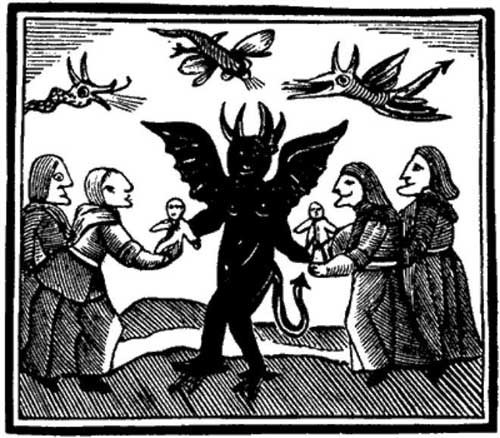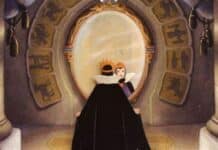BARRY McCANN tells us about The Samlesbury Witches from Lancashire, who unlike their Pendle counterparts, survived a child’s accusations
The Lancashire region of Pendle Hill is undoubtedly well-known for its famous witches, who were convicted and hanged during 1612 at Lancaster Castle.
However, there was another group of alleged witches at the same assizes whose story has been largely overshadowed by their Pendle counterparts but is no less intriguing.
The village of Samlesbury stands west of Pendle and three women who lived there – Jane Southworth, Jennet Bierley, and Ellen Bierley – were accused of witchcraft, child murder and cannibalism by 14-year-old Grace Sowerbutts, who was actually Jennet’s granddaughter and Ellen’s niece.
The trial took place on 19 August 1612 and was presided by Sir Edward Bromley, who began by discharging five of the original eight Samlesbury defendants with a warning. Jane, Jennet, and Ellen were left to face charges of using “diverse devillish and wicked Arts, called Witchcrafts, Inchauntments, Charmes, and Sorceries, in and upon one Grace Sowerbutts.”
They pleaded not guilty.
Allegations against the Samlesbury Witches
Grace was the first to testify, claiming her grandmother and aunt, Jennet and Ellen Bierley, had “haunted and vexed her” for years. These vexing’s included:
- Levitating Grace to the top of a haystack by her hair.
- Attempting to persuade Grace to drown herself in the River Ribble.
- Attending sabbats with Jane Southworth where they met with “foure black things, going upright, and yet not like men in the face”, and with whom they ate, danced, and had sex.
- Causing the death of a baby belonging to one Thomas Walshman and his wife, after which Ellen and Jennet dug up the body from its grave to cook and eat, and to make a magic ointment with which to change themselves into other shapes.
Thomas Walshman confirmed his child had died of unknown causes aged one-year-old, adding that Grace Sowerbutts was once discovered lying as if dead in his father’s barn and did not recover until the following day.
Two other witnesses, John Singleton and William Alker, claimed that Sir John Southworth, Jane Southworth’s father-in-law, believed her to be an “evil woman, and a Witch.”
In his questionable record of the Witch trials, The Wonderfull Discoverie of Witches in the Countie of Lancaster, Thomas Potts, clerk to the Lancaster Assizes, claims that upon being asked by the judge what answer they could make to the charges against them, the accused “humbly fell upon their knees with weeping teares”, and “desired him (Bromley) for Gods cause to examine Grace Sowerbutts”. Immediately “the countenance of this Grace Sowerbutts changed” and the witnesses “began to quarrel and accuse one another”.
Bromley had two JPs, William Leigh and Edward Chisnal, examine Grace more closely. She confessed her story to be untrue and the work of Jane Southworth’s uncle, Christopher Southworth aka Master Thompson, a Jesuit priest hiding in the Samlesbury area. Leigh and Chisnal asked the accused women why Southworth would fabricate evidence against them. They could offer no reason other than that each of them “goeth to the heathen (Anglican) Church”.
After the statements had been read out in court Bromley ordered the jury to find the defendants not guilty, since Grace Sowerbutts was “the perjuring tool of a Catholic priest.”
He further told the women: “God hath delivered you beyond expectation, I pray God you may use this mercie and favour well; and take heed you fall not hereafter: And so the court doth order that you shall be delivered.”

Potts concludes his account with the words: “Thus were these poore Innocent creatures, by the great care and paines of this honourable Judge, delivered from the danger of this Conspiracie; this bloudie practise of the Priest laid open”.
It is interesting that the accused women failed to draw the magistrate’s attention to their suspicions of Grace Sowerbutts’ motivations when first examined, only to do so at the very end of proceedings. However, there is the suggestion of theirs being a show trial to not only demonstrate the purging of alleged witches but also of “popish plotters”.
So the idea that a catholic priest supposedly set them up to be accused of witchcraft would have appealed to the anti papist sentiments of a judge keen to please his master, King James. It also handed him the chance of being seen to “let some go” and reassure those who doubted their impartiality. Indeed, Thomas Potts holds up their acquittal as a vindication of the judges.
Given the witch trials under the Kingship of James I were rooted the religious struggles of the period, and his own paranoia of witchcraft, then the trial of the Samlesbury witches is symptomatic of this very charged climate.








this is part of my family history.I was born a SOUTHWORTH. In fact,to many am known as Jane.It’s my middle name.
Hi Deirdre. So are you also from that area or roundabouts?